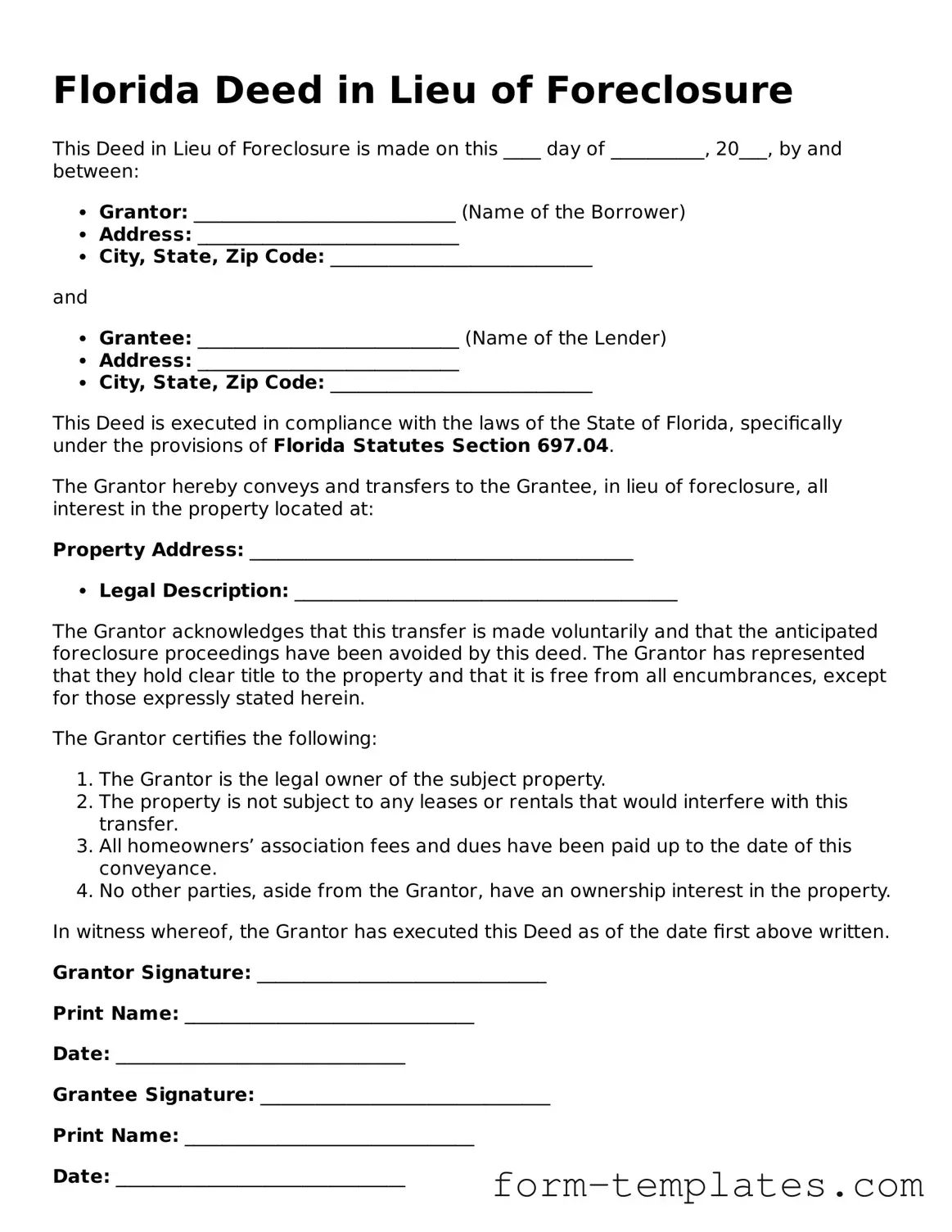Florida Deed in Lieu of Foreclosure
This Deed in Lieu of Foreclosure is made on this ____ day of __________, 20___, by and between:
- Grantor: ____________________________ (Name of the Borrower)
- Address: ____________________________
- City, State, Zip Code: ____________________________
and
- Grantee: ____________________________ (Name of the Lender)
- Address: ____________________________
- City, State, Zip Code: ____________________________
This Deed is executed in compliance with the laws of the State of Florida, specifically under the provisions of Florida Statutes Section 697.04.
The Grantor hereby conveys and transfers to the Grantee, in lieu of foreclosure, all interest in the property located at:
Property Address: _________________________________________
- Legal Description: _________________________________________
The Grantor acknowledges that this transfer is made voluntarily and that the anticipated foreclosure proceedings have been avoided by this deed. The Grantor has represented that they hold clear title to the property and that it is free from all encumbrances, except for those expressly stated herein.
The Grantor certifies the following:
- The Grantor is the legal owner of the subject property.
- The property is not subject to any leases or rentals that would interfere with this transfer.
- All homeowners’ association fees and dues have been paid up to the date of this conveyance.
- No other parties, aside from the Grantor, have an ownership interest in the property.
In witness whereof, the Grantor has executed this Deed as of the date first above written.
Grantor Signature: _______________________________
Print Name: _______________________________
Date: _______________________________
Grantee Signature: _______________________________
Print Name: _______________________________
Date: _______________________________
State of Florida
County of ______________________
On this ____ day of __________, 20___, before me, a Notary Public, personally appeared ____________________________, who proved to me on the basis of satisfactory evidence to be the person whose name is subscribed to this instrument, and acknowledged that they executed it.
Notary Public Signature: _______________________________
Print Name: _______________________________
My Commission Expires: _______________________________
